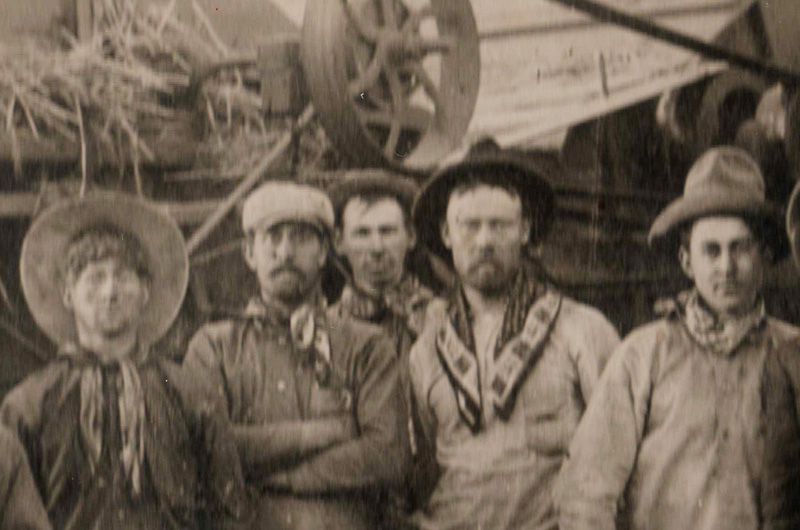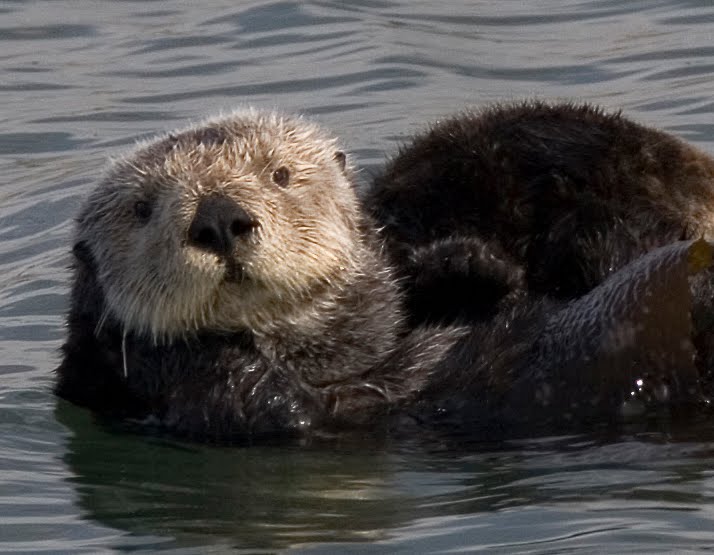The Cruise
Chapter 1
The summer of 1895 had turned extremely hot, especially about the middle of July and the harvest crew that were threshing wheat on the plains east of the Salinas river which divided the county into two distinct climatical parts, were sweltering in the awfull [sic] heat of those days.
Many men had been taken on, to replace those who had been overcome with the heat, as many as three per day were laid in the shade of those beautiful oaks which grow no where else in the state of California as they grow in that county “San Luis Obispo”.
It had been so hot in fact, that the crew had been laid up from 12 noon to 2:30 p.m. To wait for the breeze which was usually always dependable to spring up about the middle of the afternoon during all the summer months except about 3 or 4 days each month, when it was sultry until after sundown. The thermometer generally standing at about an average of 112 sometimes running up to 118 during these few days.
The times I speak of was just one of those 3 or 4 periodical days. The boys were laying under the shade of the oaks and some had taken to the water wagon, which was as cool if not cooler than the shade of the trees because of the constant dripping of the water from the tank.
The coast lay about 25 miles due west of us, and during the summer people who lived on these plains, whenever they could, when the harvest was over, and before, if it was possible to get their grain threshed early, traveled to the summer camps of which there was several on the beach, and those camps were scenes of many joyous weeks of camp life, boating, swimming, bathing, calm-digging and at night, a great bon-fire was build from the beach drift, and page wood, which was plentiful and eas[il]y had. Around this the older people sat and run over again, the many [inslimer ?? endeavors] of farm life, back on the hot [sandy ?? fiery] plains at home or reminisces of younger days while the young folks danced around and such dances as we had all out under the stars and the surf at our back and a large hole dug in the middle of the camp ground in which roasted clams enough for all. It was usually 12 o’clock before our night frivolity broke up. How could we who were doomed to spend the long hot summer months 30 and 50 miles away, and working 16 ½ hours a day fell anything but contempt for our work and a longing for the cool foggy coast. It was as much as we could do to keep at out work and all our boyish plans were what we [were] going to do when harvest was over and it seems as though everything was going to take place on the coast, no plan was laid but what it had the coast for a starting point.
Under this water wagon I lay on this July day in a half doze, my head under a leak and the persperation soaking my clothes, day dreaming of the time when the harvest would be over and then the whole month on the coast at the beach, bathing in the surf which I enjoyed so much, when I heard some one of the boys say “Here he is under the wagon, but you must get him out. It’s too hot. Get down and tie your horse in the shade and get in it yourself, you will melt sitting there. Have you had dinner. Well go over to the work house and tell the cook you are hungry, everybody eats here.” Which is, “by the way”, a harvest rule never broken, if a stranger even if he is a tramp, drops in around noon or supper time, he must eat, and it is a disrespectful act bordering on insult to decline.
I over heard much of the conversation, but did not trouble myself to see who or ask who the man was, as almost daily the same dialogue was indulged in, and it was of no interest to me. I must have dozed away into a pretty sound sleep for when I next was roused, it was by being dragged by the heels from under the wagon and someone saying get out of this you old lazy dry boner. Dry boner was a name given to the people who lived or work on this side of the coast Mts. Or on the plains, as it was called. Gathering myself for a tussle, I kicked loose and springing up. Who should I see but an old chum of mine, R.P. by name, who had left [acaclips] in the spring working on a ranch, but later had gone to the coast and engaged in the sea otter trade.
“Say, kid”, he said to me, “come and join us on the coast in our otter hunting trip. We like one more fellow and I have recommended you to the rest of the crew and have come all the way from the coast after you. I know you will never regret it. We are making good money and expect to double our catch when we get away to the hunting grounds which is about 75 miles up the coast at a place called Big Sur. He talked about 1 hour and oh how he pictured what a great sport it was and how much we could make, and about all the cool days which had more to do in persuading me that[n] his talk of money and sport. At last I consented to go, but how [?] I had no horse and it was 15 miles to the nearest town where I could get one and I was an <awfull> poor hand at footing it. He quickly overcame my objections in that line by saying he would ride and tie1, all [an] old cowboy trick I knew well. So at 3 o’clock in the afternoon on the 25th of July, 1895, I <imbarked> upon one of the most delightful trips I ever had taken, and at the present writing, have taken since.
The Cruise…NEXT
1 [One person starts out running, the other starts on the horse and rides down the trail as far as they think their partner can run (or walk) and still keep up a decent pace. At that strategic point the rider stops, dismounts, ties the horse to a tree or fence post, and continues down the trail on foot. The team member who started on foot gets to the horse, unties it, mounts, and rides to catch their partner up ahead. When they get to their running team member they can either stop and exchange, or ride further up the trail and tie the horse and then continue running. RWR]

